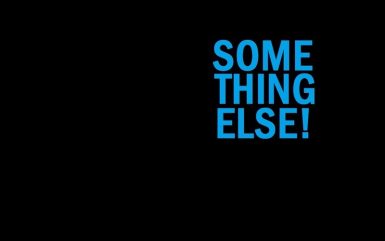feature photo courtesy of Cuneiform Records
John Surman is a long-time icon of British jazz and a big ECM Records star since 1979 (his 2024 release Words Unspoken might be the best thing ECM put out that year). But the multi-reedist was already an accomplished vet by the time he joined that prestigious label, and the Tavistock, England native saw career begin to take off toward the end of the 60s, his first date at a leader arriving in 1968.
As Surman finished up recording sessions for his second long player in April of 1969, he found himself leading a larger, ten-piece group that was captured both audio and video; five of these selections were issued by Cuneiform Records as Flashpoint: NDR Jazz Workshop – April ’69 in 2011. Now in 2025, Cuneiform has released the entire thirteen tracks audio-only under the title Flashpoints and Undercurrents.
Flashpoints and Undercurrents was recorded at the Grosser Sendesaal des NDR Funkhauses in Hamburg, West Germany. Though set in a studio, the applause between pieces and after solos indicates a concert performance, and the single day sessions were regardless recorded that way with the entire band assembled in a large room and recorded live. For that reason, there’s noticeably more reverb than what’s heard in a typical studio recording, but it was captured in stereo and expertly engineered.
Surman’s dectet was a veritable who’s who of Brit-jazz at the close of the 60s, with a couple of Austrians added. Alan Skidmore (flute) and Ronnie Scott both bring tenor saxes and Kenny Wheeler plays trumpet and flugelhorn, while two trombones are handled by Malcolm Griffiths and Erich Kleinschuster. The rhythm section was Fritz Pauer (piano), Harry Miller (bass) and Alan Jackson (drums).
All of these compositions are originals, ten from Surman and one a piece from Pauer and Wheeler. Many of these songs didn’t appear on records anywhere else. That makes Flashpoints and Undercurrents a bonafide, full album that was mostly hidden away for over five and a half decades.
Wheeler takes the first solo on “Jack Knife,” already a fully developed talent at flugelhorn and trumpet — as he should be as he was almost forty at the time — but playing with the fire and hunger of a musician half his age; he is also introspectively lyrical on “Once Upon a Time.”
Surman commands “Gratuliere” from the perch of his soprano saxophone, which owes a debt or two to Coltrane but was already expressing in its own language. “Hallo Thursday”‘s intro is in tune with the spiritual jazz popular in the immediate wake of Coltrane’s death, moving into the swinging modalism that is also a signifier of 60s jazz. The horn arrangements were well conceived and Pauer puts in a stellar piano spotlight. I also like how Miller ends his bass solo with a figure picked up my Surman’s bass clarinet as a prelude for the full horn section returning for the ending.
Surman’s barely-contained moments on soprano sax during “Mayflower” hints at the European free jazz movement that was set to explode over the ensuing decade, yet it’s part of a deliberately constructed composition and arrangement. “Puzzle” with its incendiary trombone solo threatens to spin out of control but Pauer’s sharp comping keeps it on orbit.
“Background” is noted for a seismic tenor sax spotlight, a full-on freakout and ending with unaccompanied piano gracefulness. “Aqua Regis” is seven horns blasting freeform jazz all at once. A baritone maestro from the word ‘go.’ Surman summons the raw power of the burly reed throughout much of the rambunctious “Flashpoint”
But these are far from pure blowing sessions; Surman’s emphasis on composition often make that a leading feature of these performances in spite of the vast improvisational firepower on hand. “Dallab” and “Once Upon A time” for instance, are remindful of the gorgeous charts Herbie Hancock put together for his Speak Like A Child sextet.
This version of “Where Fortune Smiles” precedes by about fourteen months the well-known adaptation that Surman recorded with John McLaughlin, Karl Berger, Dave Holland and Stu Martin. Cast in a larger group setting, the song truly radiates led by Surman on soprano sax, but the stately horn arrangements serve to bring more of his melody than possible in a small group.
“Beyond the Hill” rocks out instead of swings, proving that Surman was well attuned to popular music of the time and experimented with working contemporary styles into his music.
John Surman would go to embark on a journey that would take him to great heights in jazz and beyond, and continues to the present. We learn from the expansive Flashpoints and Undercurrents that the journey was well underway very early on.
It’s available today via Bandcamp.
*** John Surman CD’s and vinyl on Amazon ***
- Matthew Shipp – ‘The Cosmic Piano’ (2025) - June 17, 2025
- Ivo Perelman & Matthew Shipp String Trio – ‘Armageddon Flower’ (2025) - June 16, 2025
- Claudio Scolari Project – ‘Bloom’ (2025) - June 12, 2025



